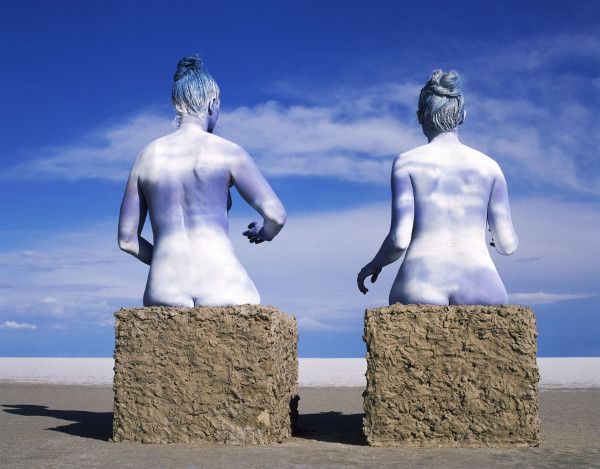Eye For Film >> Movies >> Metamorphosis (2018) Film Review
Metamorphosis
Reviewed by: Amber Wilkinson

There is no shortage of documentaries about the state of our planet. From David Attenborough's warnings on TV to films like An Inconvenient Truth. Few of them are as cinematic or overarching as Nova Ami and Velcrow Ripper's Metamorphosis, which takes its title to heart and in all directions - showing how the planet is changing for the worse but also the ways in which we can also change it, and ourselves, for the better.
Their framework hinges on the story of the monarch butterfly, itself a natural example of transformation, and an animal which has faced increasing hardship due to factors including earlier springs and a destruction of its chief food source, which have made its long migration from Canada to Mexico and back again increasingly treacherous. As a visual metaphor it's a winner - there are few things as beautiful as a cloud of butterflies in flight and few things more depressing than the same colourful cohort floating dead in a stream. Also, all though it's never mentioned specifically, there's no doubt it brings to mind the butterfly effect.

The butterfly story is coupled with the myth of Proteus, a "notorious shapeshifter" who "would only change his shape if coerced into it". That would be where we come in.
The intention of the husband and wife directors is not to labour the point about the planet's plight, though they show right through this documentary - from the seas to raging wildfires. Their focus is on the positive steps being taken in countries around the globe, from children planting milkweed in North America to skyscrapers in Milan which feature a 'vertical forest' of trees. This mixture is part of the film's success. For every story of artists like Jason deCaires Taylor - whose underwater sculptures reflect on world events such as the refugee crisis as the same time as being the starting point for new reefs - there are tales of crucial changes that are as small as a seed in the palm of the hand of a five-year-old.
We hear a chorus of voices and see the speakers, although they are not named until the end credits. This takes a moment to get used to but encourages us to remain fully engaged with what is being talked about rather than who is speaking and inspires a curiosity that can be no bad thing. As these experts and environmentalists talk we see images of destruction but also of rejuvenation, they are interspersed with artwork and moments when naked bodies are seen reflecting the environment, all of which gives the film's ideas room to breathe and creates a more meditative effect. The approach comes as a joyful reminder that science, philosophy and poetry need not be mutually exclusive.
If one or two of the ideas may seem a bit on the hippy fringes - such as the off-the-grid earthship project created by Michael Reynolds - surely we all need a hug sometimes? And for everyone of these more 'extreme' examples of self-sufficiency there are projects such as solar panelling that are much more easily accessible for the woman or man on the street.
Ripper and Ami's photography and sound design are impeccably handled throughout, matching their big ideas with a big screen vision. There are hard truths here but, beyond that, there is hope.
Reviewed on: 20 Jun 2018















